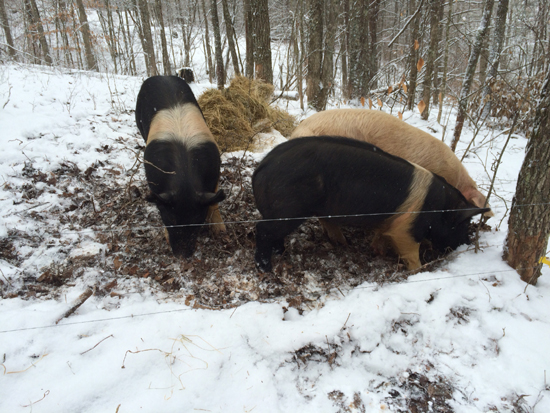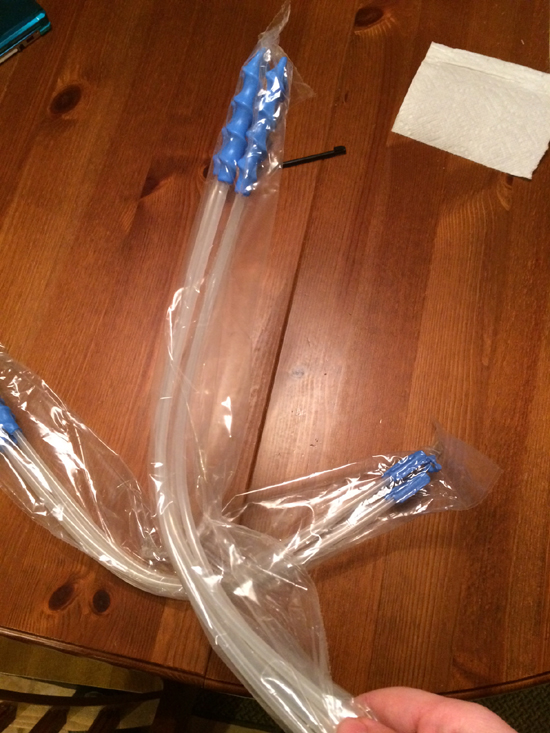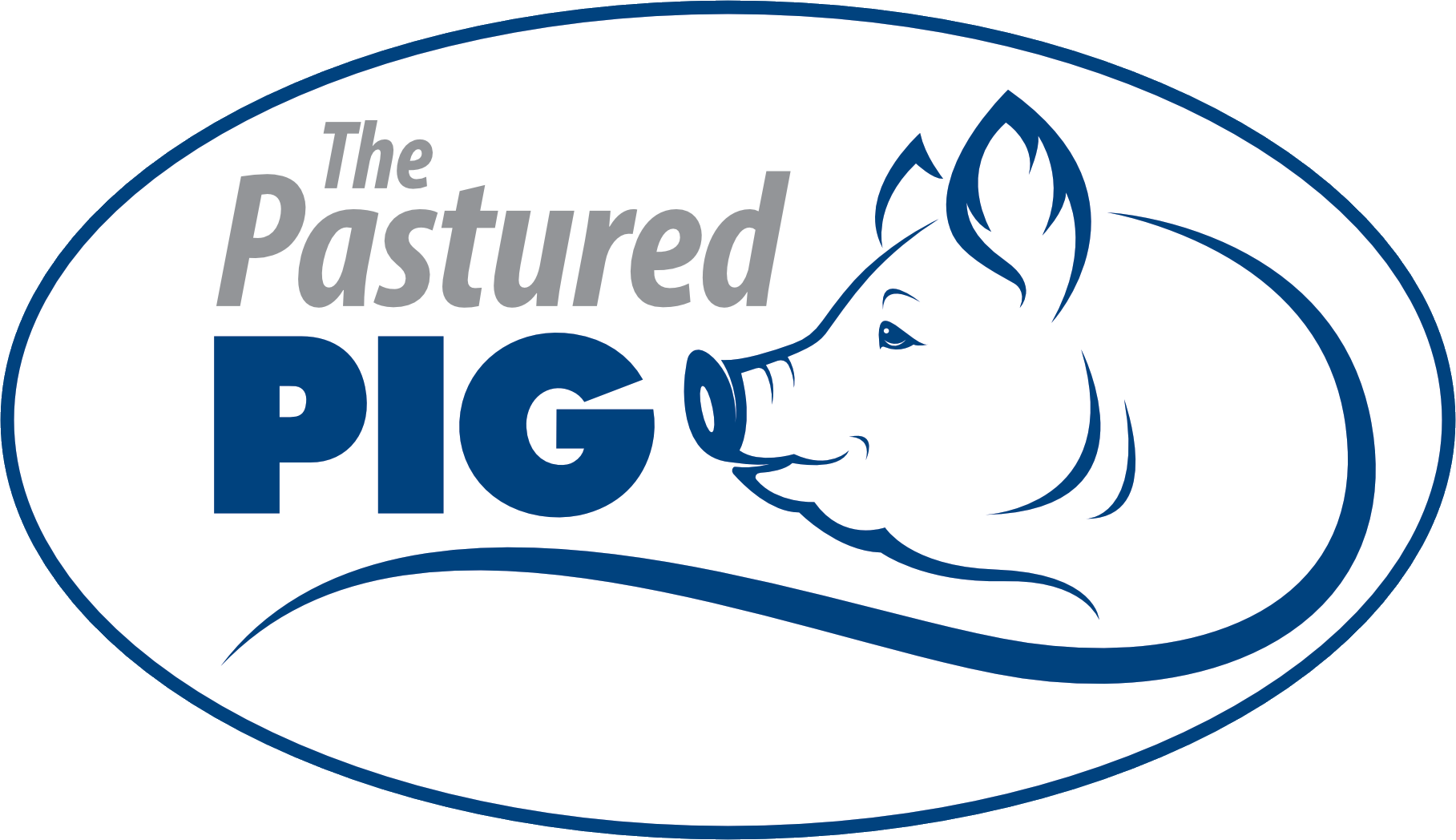The pigs we have been raising the past year are now mature enough to breed. The first question that came to mind was how exactly are we going to do this? We have 3 gilts and no boars, so do we send our girls out on a date? Or do we find some boar that would like to hang out at our place for a couple of days?
After some research and a strong desire not to have to deal with a boar, we decided to explore the option of artificial insemination. AI seemed easy enough when you watched Youtube videos and other how-to demos online. In my short farming experience, however, I have learned that nothing is ever as easy as it appears on line.
We needed to address two big issues with considering AI. First, from where are we going to get the donor sperm? There are many swine farmers online that can ship any where across the country and the varieties are limitless. It appears that a majority of swine semen producers are in the mid west. The second issue was directed at me. Was I good enough to know exactly when my gilts were in heat?
I first started with requesting a free catalog from one of the big producers I found online. I was wanting to see the look on our postal carrier’s face when she places the full color catalog into our mailbox. She would have to see the cover with the word “SEMEN” in block letters across the front. Fortunately, the catalog was discreetly packaged in a manila envelope, so no big shocker for her that day.
I have to say, the catalog caught me a little by surprise. It was like reading a pig pin-up magazine. They even had the choice boar in a centerfold spread. Naturally, I didn’t fixate on the images, I just read the articles (guys will get that one). In all seriousness, the catalog was helpful, but it really underscored my ignorance in the whole matter. I decided I was going to call a producer and talk to them.
I found a farm in Ohio that had a website for boar semen. Upon calling the number listed, after hours I might add, a very friendly man discussed in great detail how the whole process works. I think I even interrupted his dinner. Needless to say, I was definitely buying from this guy. He quickly put my stud selection fears at ease when I explained my intent with the pigs.
“I just want to produce good meat pigs this fall,” I explained, “I’m not trying to establish a breed line. These pigs don’t have to be talented or be able to attend college. They just need to make good sausage.”
“Well, that is easy then,” he said, “With your breed of pigs, consider Duroc semen. It will give you hybrid vigor and Duroc is a very popular meet breed.”
It was that simple.
Here is how this AI process goes down:
Determine the day that your gilt will “stand” (more on that)
Order the semen so it arrives as close to that day as possible (its good for 10 days if you maintain it correctly)
Order the necessary application equipment
Develop a plan to sit on the back of a 200 lb pig and shove a 18 inch catheter in her rear end (still hadn’t nailed this down yet)
Timing: One of the many things I found miraculous in this entire process is that gilts go into “standing” heat. When they are ready to be bred, any pressure placed on their backs will cause them to stand fixed at attention for quite a long time. I needed to test that. The gilts will show signs of approaching heat by having swelling and some discharge in their pig parts.
Once I noticed that, it was time to test the standing heat theory. I quickly learned that if they aren’t ready to stand, they will let you know very quickly. For a couple of days, it looked like some bad contest at a county fair as I try to sit on the backs of the gilts and they buck, squeal, and take off running. Several times I hit the dirt… hard. But one morning I came to the pasture and sure enough, I sat on the back of Molly (the boys named her) and she stood rigid. I could have used her for a bench. It was fascinating.
The very next day, Abigail (boys again) did the same thing! I had the dates of standing heat, so now I knew that 21 days later they would be ready to go.
When I got my package from UPS, it had six doses of semen (3 per pig) and the catheters needed.
That was the next thing that amazed me. The catheters have spiral tips. The anatomy of a female pig includes a spiral cervix. You actually “screw” the catheter into place. I guess there are origination points even for slang terms.
The plan was to inseminate every 12 hours during the standing period which could be as little as 24 hours or as long as 36 hours as it was explained to me. The first dose for both gilts was definitely an experience. I didn’t attempt to photo document simply because I had no hands free and still am not secure enough to have those images loose on the internet. I thought about asking Kelly to film the deed, but that even seemed a bit weird.
The second doses had to be at night. Kelly was recruited for this round simply because she had to hold the flashlight. So there we were in the middle of February, in the snow, in the dark, trying to inseminate two pigs by flashlight. All the more reason to start on the barn this year.
At this time, we are not sure if the breeding worked. I can’t seem to find any EPT tests for swine at the pharmacy, so the only real identifier is to wait 21 days and see if they stand again. If they do, then we will have to start all over. As I type this, tomorrow will be the 19th day so we should know soon whether our efforts were in vain or not.
We eagerly anticipate a successful breeding, but may have to face disappointment as well. Another interesting fact is the gestation of a pig is 3 month, 3 weeks, and 3 days. How cool is that? So hopefully come June, we will have piglets running around here at Red Tool House Farm.








Bwahahaha! I wish Kelly had videoed it. Thank you for making me glad to raise chickens, bees & water fowl. I don’t even mind rooster so much after reading this!